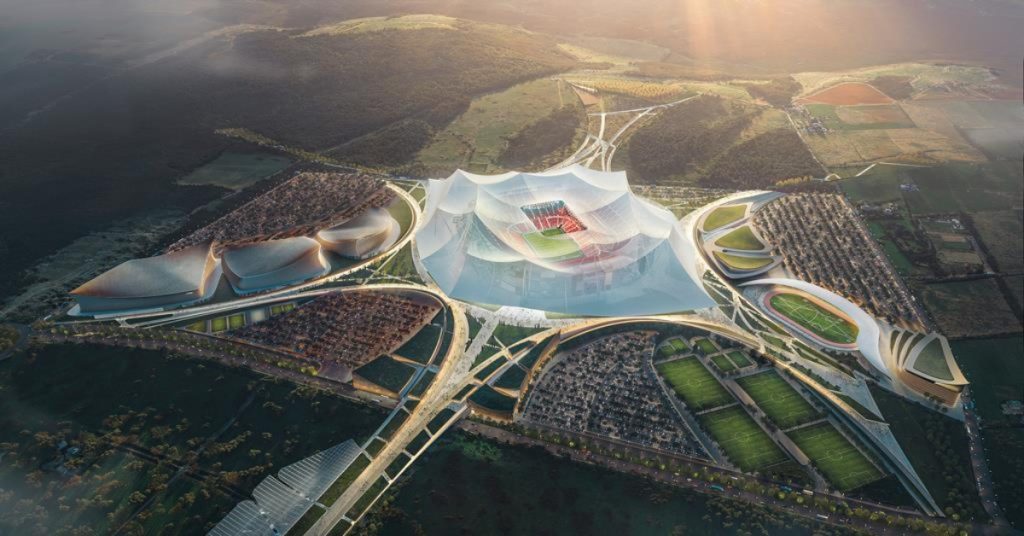While FIFA's main priority in the coming years is the 2026 World Cup in the USA, plans are also in motion for the 2030 event.
This 2030 World Cup already feels like a special and unique edition of the tournament, due to the fact that for the first time it will be played across three continents. Portugal, Morocco and Spain are the main hosts but matches will also be played in Argentina, Paraguay and Uruguay.
The main reason for the multi-host format is that 2030 will mark 100 years since the first-ever edition of the World Cup. With six nations playing host to matches, organisers are keen to get host cities and stadiums finalised as soon as possible.
Our guide below covers everything you need to know about the potential World Cup 2030 stadiums.

World Cup 2030 stadiums – by country
Spain
Spain are expected to host more matches than the other nations at the 2030 World Cup, including the final at the end of the tournament. Below are the list of stadiums they have submitted to FIFA.
Camp Nou
The renovation work at the Camp Nou will be completed in plenty of time ahead of the 2030 World Cup. With a capacity of 105,000, the Camp Nou will be the biggest European stadium at the tournament.
Estadi Cornella-El Prat
Across the city in Barcelona is the Estadi Cornella-El Prat which will also host matches at the tournament. It opened in 2009, is the home stadium of Espanyol and has a capacity of 40,000.
Estadio de La Cartuja
The Estadio de La Cartuja will finally get its chance at a major sporting event after initially being built for Seville's failed bids for the 2004 and 2008 Olympics. It has been selected ahead of Sevilla's and Real Betis' respective stadiums and has a capacity of 57,600.
Estadio Gran Canaria
The Estadio Gran Canaria is the only stadium on the list that isn't based in mainland Spain. It is the home of La Liga side, Las Palmas, and has a capacity of 32,400.
Estadio La Rosaleda
The Estadio la Rosaleda is one of the most historic stadiums on this list after opening way back in 1941. It remains the home ground of Segunda Division side, Malaga, and has a modest capacity of 30,044.
Estadio Municipal de Anoeta
The Anoeta is one of two stadiums set to be used in the Basque region of Spain and is the home of Real Sociedad. The stadium is relatively modern after being opened in 1993 and has a capacity of 40,000.
Estadio Municipal de Riazor
The Estadio Municipal de Riazor is another second-tier stadium being used by Spain for the 2030 World Cup. It is the home of Deportiva La Coruna and has a capacity of 32,490.
Estadio de San Mames
The Estadio de San Mames is the second of the two Basque stadiums set to be used at the tournament and is also one of the newest. It opened in 2013, is the home of Atheltic Bilbao and has a capacity of 53,331.
Nueva Romareda
The Nueva Romareda is the only stadium on the Spanish list that is yet to be built. The stadium will replace the existing La Romareda in Zaragoza, which is currently still hosting matches despite being half-demolished. The new stadium will have a capacity of 42,500.
Riyadh Air Metropolitano
The Riyadh Air Metropolitano has been widely regarded as one of the finest new stadiums in the world since opening its doors in 2017. It is the home of Atletico Madrid and has a capacity of 70,460.

Santiago Bernabeu
The Santiago Bernabeu is arguably the most famous football stadium on the planet and is expected to play host to the World Cup final in 2030. It is the home of Real Madrid and recent renovation work has only added more glamour and mystique to the place.
Morocco
Morocco are expected to play host to around one-third of the matches at the World Cup and have submitted six stadiums to play host to these games.
Adrar Stadium
The Adrar Stadium was originally built to be part of Morocco's failed bid for the 2006 World Cup. Some 24 years later, it will finally get the opportunity to host matches at a World Cup. It has a capacity of 45,480.
Complexe Sportif de Fes
The Complexe Sportif de Fes will undergo renovation work ahead of the 2030 World Cup but as things stand, it has a capacity of 45,000. Remarkably, it took 13 years for the stadium to be built in the 90s and 00s.
Fez Stadium
The Fez Stadium is also undergoing renovation work at present to take the current capacity of 35,000 to 55,000. The construction work is being done in two phases to allow the stadium to play a part in the 2025 Africa Cup of Nations.
Grand Stade Hassan II
The Grand Stade Hasson II will become the biggest football stadium when it is completed with a planned capacity of 115,000. Morocco hope that the plans for the stadium will be enough to persuade FIFA to give them the final ahead of the Bernabeu.

Ibn Batouta Stadium
The Ibn Batouta Stadium recently underwent renovation work to boost its capacity to 65,000 in order for it to host matches at the 2022 World Club Cup. The Morroco national team have played five matches here since it opened in 2011.
Stade de Marrakech
The Stade de Marrakech will also undergo renovation work ahead of the 2030 World Cup but at present, it has a capacity of 42,000. There is a running track around the pitch which isn't ideal of fans.
Portugal
Portugal are expected to host around ten matches at the 2030 World Cup and have submitted just three stadiums across two cities.
Estadio da Luz
The Estadio da Luz is the home of Benfica and has a capacity of 65,592. Many big football matches have taken place here in the past, including the Euro 2004 final and the 2014 and 2020 Champions League finals.
Estadio do Dragao
The Estadio do Dragao is the only stadium outside of Lisbon selected by Portugal for the 2030 World Cup. It is the home of FC Porto and has a capacity of 50,033.
Estadio Jose Alvalade
The Estadio Jose Alvalade is the home of Sporting Lisbon and has a capacity of 50,095 making it marginally bigger than the Dragao. Like the other two stadiums in Portugal for the 2030 World Cup, it was opened in 2003.
Uruguay
The first match at the 2030 World Cup will take place in Uruguay at the following stadium:
Estadio Centenario
The Estadio Centenario is one of the most historic stadiums in world football as it was the host of the first-ever World Cup final back in 1930. It has a current capacity of 60,235.

Argentina
The second match at the 2030 World Cup will take place in Argentina at the following stadium:
Estadio Monumental
The Estadio Monumental is one of the biggest stadiums in the world with a capacity of 84,576. It is the home of River Plate and played host to several big matches over the years including the 1978 World Cup final.
Paraguay
The third match at the 2030 World Cup will take place in Paraguay at the following stadium:
Estadio CONMEBOL
The Estadio CONMEBOL is currently under construction in Paraguay. When completed, it will have a capacity of around 50,000.
